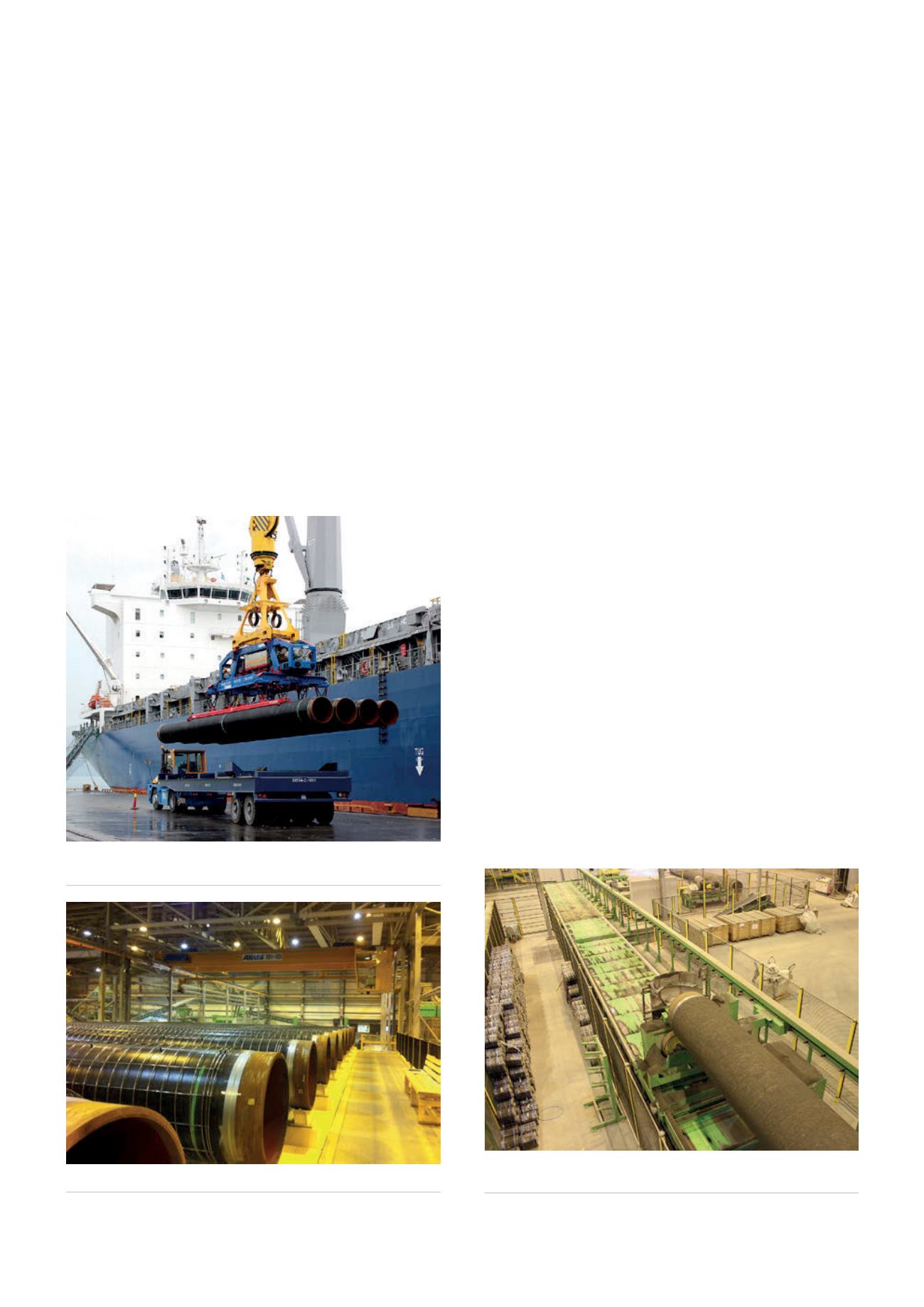
a new, state-of-the-art, concrete weight coating facility in Mo
i Rana, Nordland, Norway. Mo i Rana was selected because of
its strategic location and its existing infrastructure capable of
providing support services.
Beating industry standards
The pipes for this project were coated in two locations across
two continents. The start of the project began with the anti-
corrosion and internal coating process in Wasco’s flagship facility
in Kuantan, Malaysia.
Upon the completion of these coating processes, the pipes
were stored in the Kuantan yard awaiting for shipment to Mo i
Rana. The 332 000 t of coated pipes were then shipped over a
period of 11 months to Mo i Rana to be concrete weight coated.
Upon arrival in Mo i Rana, the vessels were temporarily
berthed at the Bulk Terminal. Here, the vessel loads were
lightened by discharging part of the pipes onto coasters. When
a suitable draft was achieved the main vessel berthed at the RIT
berth adjacent to Wasco’s concrete weight coating facility. All the
vessels were fitted with special vacuum lifting equipment on their
arrival at Mo i Rana, which allowed the pipes to be discharged
without the use of hooks or stevedores in the holds or on the
quay. This ensured minimal handling and higher standards of
safety. Wasco achieved a discharge rate of 6000 tpd, by utilising
custom built terminal trailers to accommodate four pipes across
the bed, lifted in a single lift, weighing on average 33 t.
As a result of this specially designed equipment, stringent
processes and meticulous trainings of the operators, Wasco
achieved zero bevel/coating damage to the 40 000 pipes during
the transportation and the discharge phase despite the additional
handling carried out offshore.
Throughout the duration of this project, Statoil was able to
track the exact location of their pipes and their progress through
the various coating processes via Wasco’s proprietary pipe coating
management system (PCMS).
Coating concrete to perfection during the
Nordic winter months
When the pipes were ready to be concrete coated they were
destacked by reachstackers fitted with automatic spreader bars,
and loaded onto the trailers for transport to the coating plant.
All pipes that entered the plant were tallied before passing
through a heating enclosure to warm the pipes and remove
any ice or snow. The equipment was designed to ensure that
at 30 pipes per hour, the temperature recorded a minimum
of 10˚C when exiting the heating enclosure, even when the
outside ambient temperature was as low as -25˚C. Due to this
special design feature, the concrete coating application process
continued without any disruption throughout winter.
On exiting the oven, the pipe would be checked for any
damage to the coating before proceeding to the cage mandrel
where a steel rebar cage is inserted onto the pipe in preparation
for the concrete weight coating application. As each pipe has a
specific length, the cages were produced individually and are pipe
specific and held in sequence according to information from the
PCMS.
Once the cage is placed on the pipe, the pipe is transferred to
the pegging conveyor. Here plastic spacer pegs are hand fitted to
the cages and then lifted and secured to ensure the cage is both
Figure 2.
Caged pipe before concrete weight coating.
Figure 3.
Coated pipe on buggy after concrete weight
application.
Figure 1.
Unloading polyethylene (PE) coated pipes with
vacuum lift.
26
World Pipelines
/
MARCH 2016


